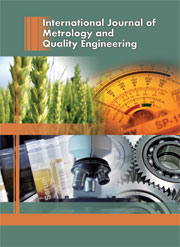Article contents
Morphology and properties of polymer matrix nanocomposites
Published online by Cambridge University Press: 19 April 2010
Abstract
Carbon nanotubes (CNTs) have become strongly promising nano-particles for developing novel smart polymer matrix nanocomposites to satisfy the ever increasing design requirements of the recent avenues of space industry and other special structural applications. The objective of this paper is to investigate the influence of doped and dispersed CNTs in polymer matrix on its intrinsic properties. Three different types of polymers; polyvinylchloride (PVC), polymethylemethacrylate (PMMA), and polystyrene (PS) were subjected to this experimental investigation. CNTs/polymer matrix composites with a content ratio of CNTs up to 5% by weight were synthesized in lab. The nanocomposites were then characterized by measuring their mechanical, electrical, and thermal properties. In addition, thermo gravimetric analysis (TGA), Fourier transform infra red spectroscopy (FTIR), and scanning electron microscopy (SEM) were applied, and the results are presented and discussed. It can be generally concluded that both PMMA and PS polymers disclosed much better matching ability and cross linking ability with the interweaving CNTs than the PVC. Both PMMA and PS polymers may thus be nominated for further extension of the investigation to cover a wider range of CNTs content ratios in an endeavour towards searching for maximum specific performance properties of such nanocomposites.
Keywords
- Type
- Research Article
- Information
- International Journal of Metrology and Quality Engineering , Volume 1 , Issue 1 , 2010 , pp. 33 - 39
- Copyright
- © EDP Sciences 2010
References
- 8
- Cited by




